Although we’ve enjoyed a few recent snow storms, there’s no denying that spring weather is on the way here in Mammoth Lakes. This is a lovely time of year when we can enjoy more wildlife sightings, longer days, the start of the fishing season and the return of our favorite wildflowers!
Take a look at these 8 wildflowers that will start to appear from now until the start of summer.
Giant Red Paintbrush (Castilleja miniata)
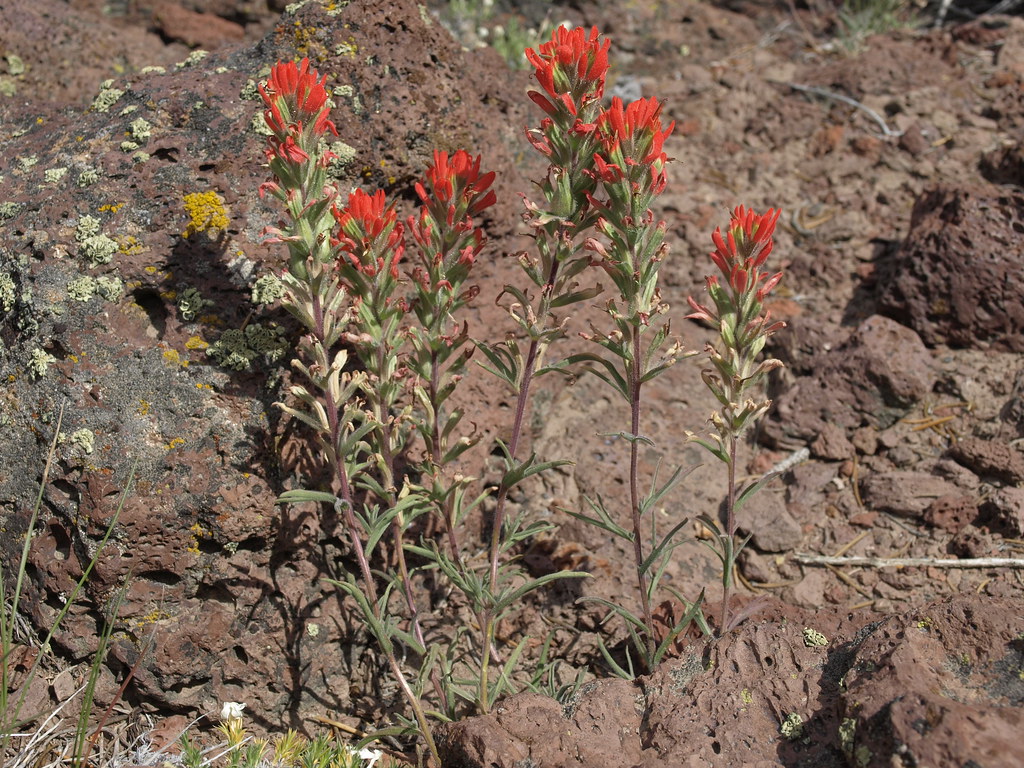
This is one of the most eye-catching wildflowers you’re likely to see up here in Mono County. It grows in clusters of green stalks with tufts of red “flowers” on top. These flowers are actually called bracts, or modified leaves, which give the plant the appearance of a paintbrush dipped in red paint.
Interestingly, the red paintbrush is a hemiparasitic plant, meaning that it can absorb nutrients from the roots of grasses that are unfortunate enough to grow too close. And, while small amounts of the flowers are edible, and have been used as garnishes for native tribes, the stems and green leaves are highly toxic.
Prime blooming times for Red Paintbrush are from May to September.
Fireweed (Chamerion angustifolium)
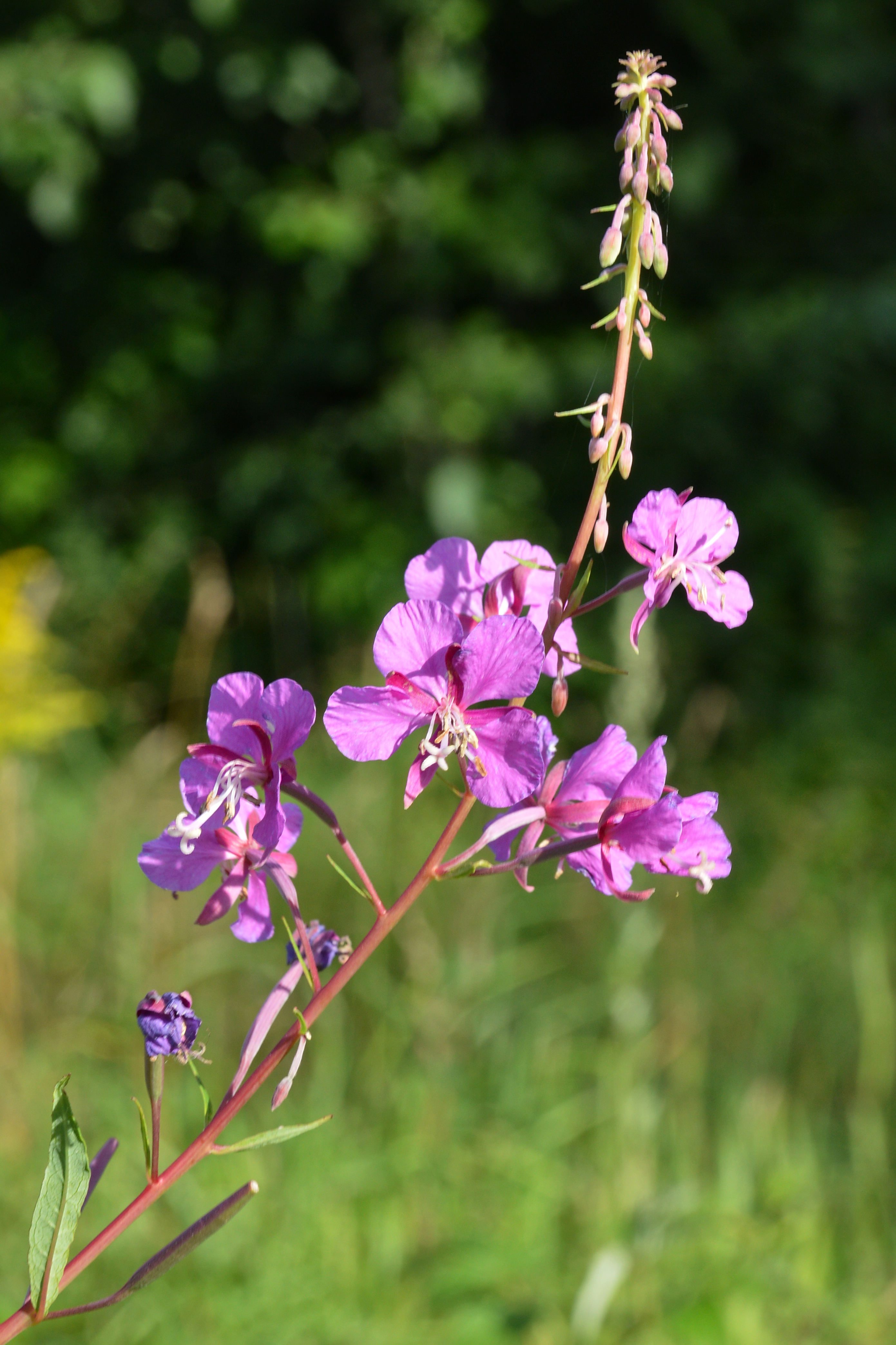
Fireweed is a vibrant pink flower that thrives in open meadows, especially where there are streams or brooks. They can grow up to 6 feet tall in our area, with towering columns of small four-leafed flowers (a single stalk can have around 50 flowers!)
Fireweed has something of a harsh name for a plant that is so beautiful and delicate. But the name actually comes from this plant’s ability to grow back quickly in areas that have been decimated by wildfires. They are most abundant during June to September.
Desert Peach (Prunus andersonii)
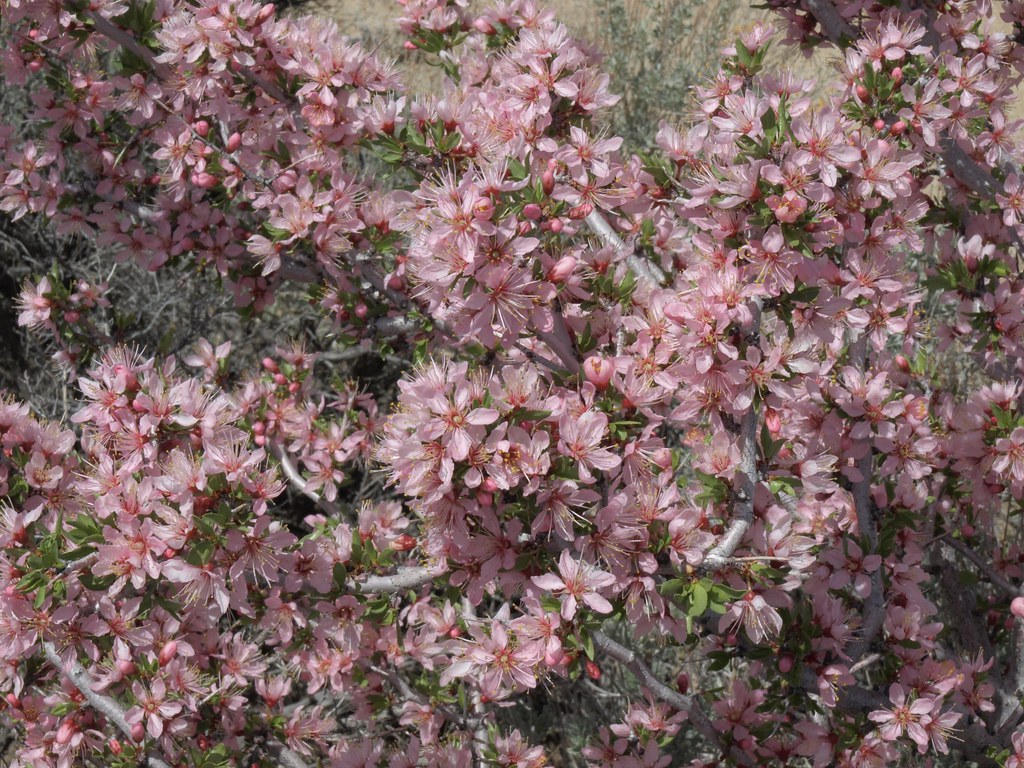
For much of the year, the Desert Peach looks like an unassuming shrub living among the sagebrush in our harsh dry climate. But, from March to May, this humble desert plant puts on quite a show! When in bloom, the branches (which can reach up to 6 feet tall) become covered in small white and light pink flowers. True, to the name, they also produce tiny edible peaches, which provide food for squirrels and other small rodents. The flowers, leaves, and stems are a favorite snack for mule deer and black-tailed jackrabbit.
Eastern Sierra Pennyroyal (monardella linoides ssp. sierrae)
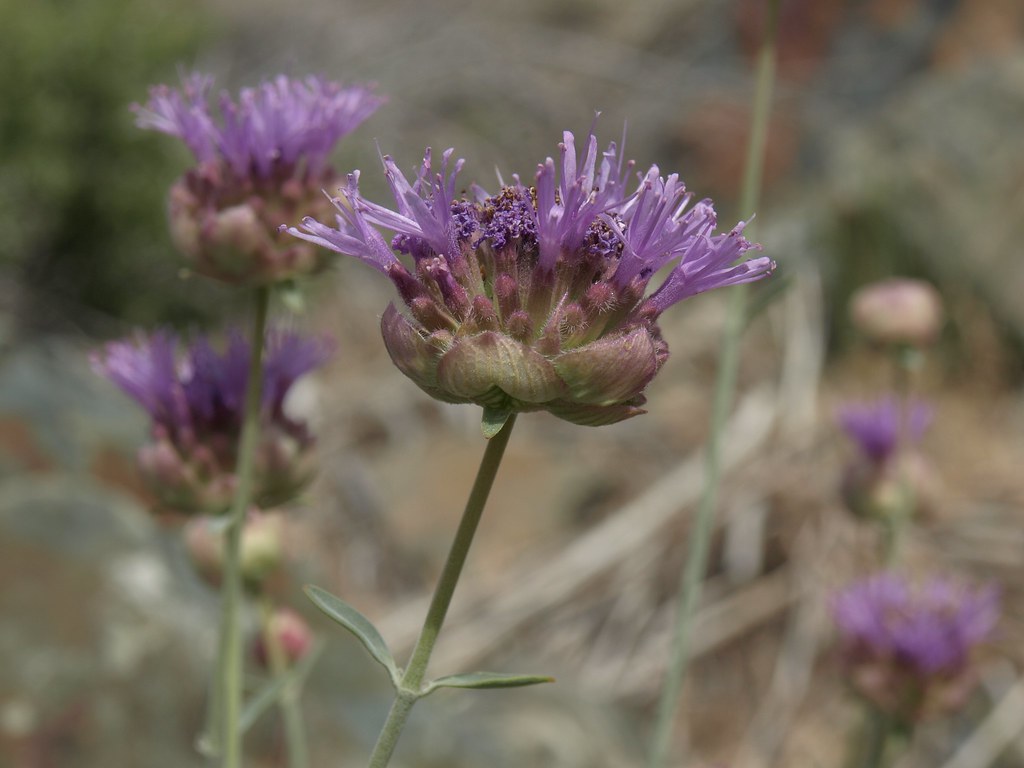
If you’re not actively looking for the Eastern Sierra Pennyroyal during your high altitude hikes, chances are, you’ll miss this delicate little flowering bush. These hardy members of the mint family can be found at over 11,000ft elevation and are endemic to our area, having evolved to perch themselves on rocky outcrops. Because of their light sage-green leaves and pale lavender flowers, they blend in quite well in their granite homes. Get a closer look and you’ll notice they give off a subtly minty smell.
Inyo Bush Lupine aka Grape Soda Lupine (lupinus excubitus var. excubitus)
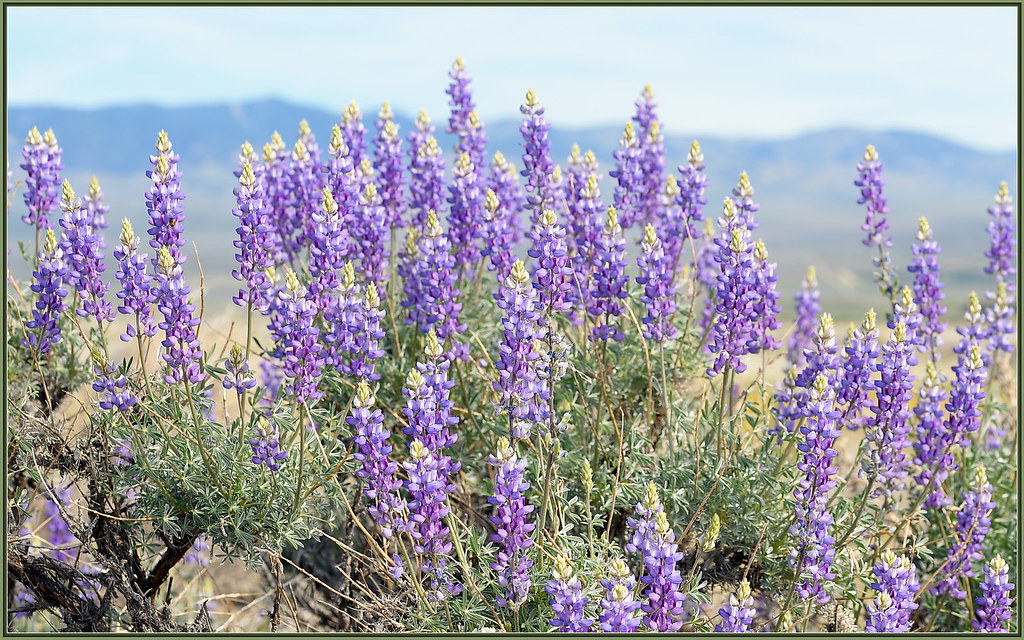
These Eastern Sierra native shrubs blanket meadows and clearings through Mammoth Lakes and the Owens Valley. And at the right time of year, sometime in spring or summer, their abundant bloom creates a stunning show of rich purple flowers. Their alternative name, the grape soda lupine, comes from their distinct smell, which is reminiscent of the sweet soft drink.
Lupine flowers are highly sought out by butterflies and other pollinators, but due to the toxicity of their velvety green leaves and stems, are avoided by deer and other grazers.
Rocky Mountain Iris (Iris missouriensis)
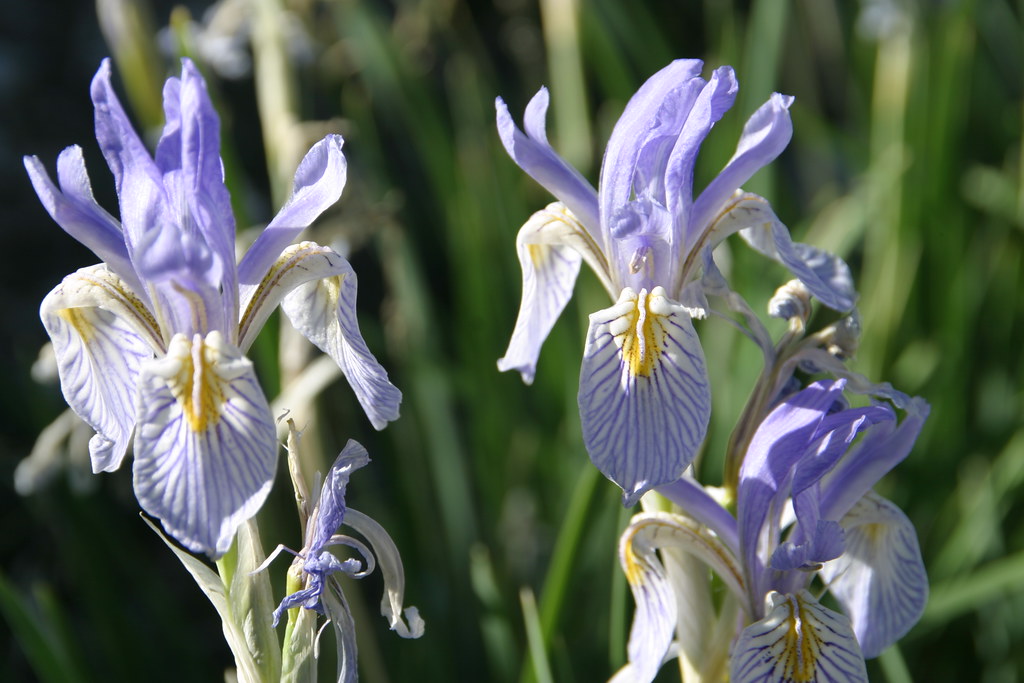
These wild irises, sometimes also called the Blue Flag Iris, are some of the most elegant and stunning flowers you’ll see in the Eastern Sierra. They grow on a tall stem of up to 2 feet high and showcase a large, papery flower that is yellow at the center and light blue to deep purple at the edges. The blooming period for Rocky Mountain Irises is relatively short, peaking sometime between May and June. Bridgeport Valley, north of Mammoth Lakes on the 395, is one of the best places to see them!
Crimson Columbine (Aquilegia formosa)
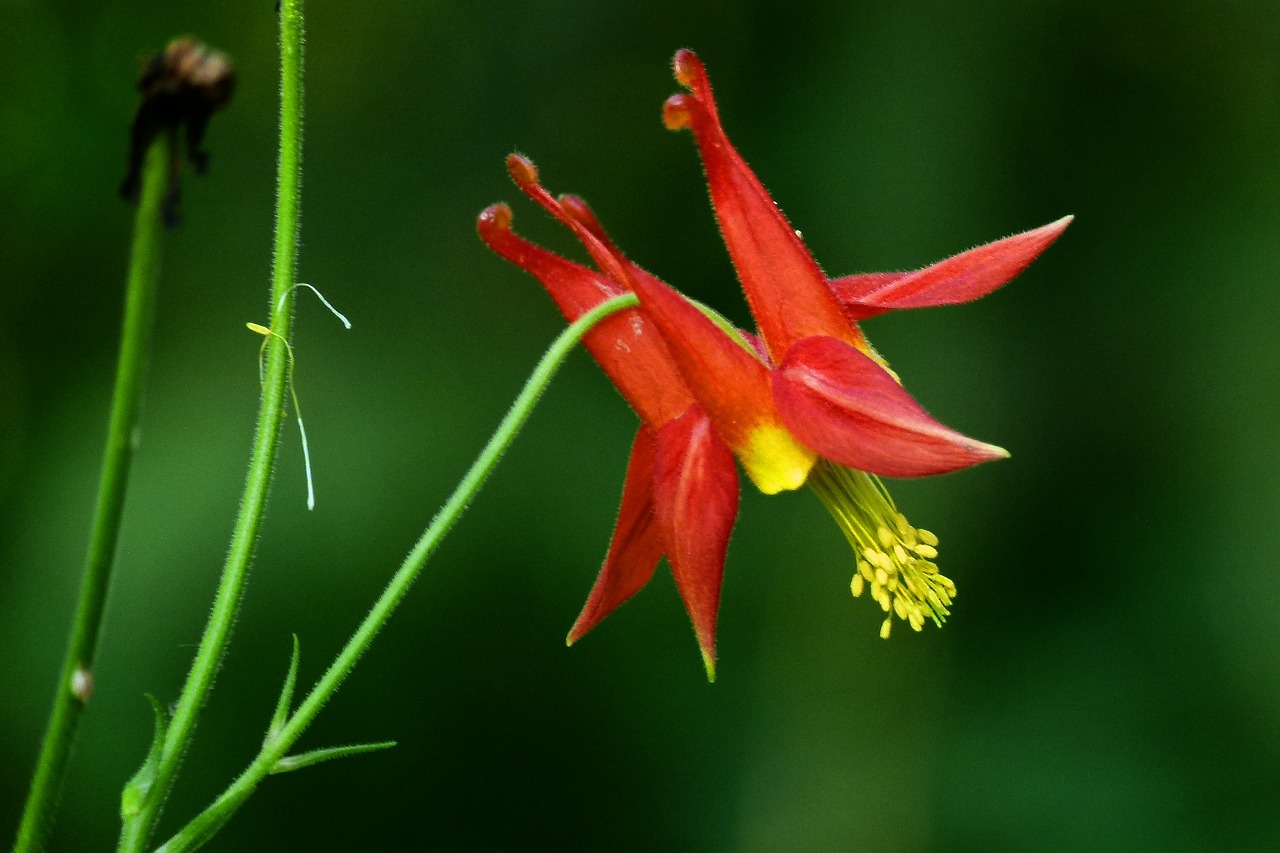
The Crimson Columbine, aka Red Columbine or Western Columbine, is one of our boldest, almost cartoonish, looking wildflowers. They bloom in abundance along streams, and their brightly colored yellow and red petal spurs attract high altitude hummingbirds, like the Calliope Hummingbird, and hummingbird-sized Sphinx Moths.
Although the nectar from these flowers is deliciously sweet, the seeds, and all other parts of the plant are toxic.
Sierra Tiger Lily aka Alpine Lily (lilium parvum)
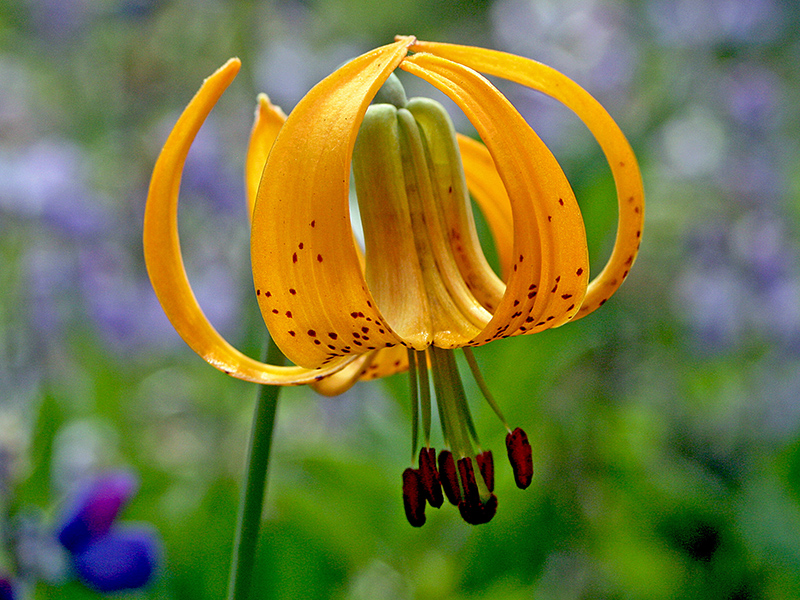
Another bold wildflower on our list, the vibrant orange Sierra Tiger Lily is a bell-shaped flower about the size of your palm or slightly smaller. When in full bloom, these flowers show off dark maroon spots that guide pollinators to their nectar. Yosemitehikes.com described these flashy flowers as “the Laker Girls of the High Sierra,” and you can see them strut their stuff between June and August.
Like the Crimson Columbine, you’re likely to find this flower on streambeds and in marshy areas.
Tips on enjoying wildflowers during your next trip
We locals love to share our enthusiasm about wildflowers with new and returning visitors to the Eastern Sierra. Here are a few ways that you can enjoy this fantastic show of nature!
-
Choose hiking trails with the best wildflowers. For wildflower enthusiasts, we always recommend a trip to Sky Meadows. This moderate hike features plenty of open marshes and streams, which are prime locations for a variety of wildflower species. You can also check out Agnew Meadows Wildflower Loop, which is a much more accessible and shorter hike near Reds Meadow.
-
The later on in the season you visit, the higher you’ll have to climb. Wildflower blooms are dependent on snow melt, which is why lower elevation flowers will start to appear earlier in spring than those higher up. So, if you feel that you’ve already missed the show, don’t worry! You just may have to hike a little further into the mountains to see the late bloomers.
-
Don’t forget bug spray. Spring and summer is when mosquitoes are most active!
-
Do your best to keep from trampling wildflowers. We absolutely understand the urge to stop and smell the flowers. But, if you can, do it from a safe distance. This also goes for off-leash dogs, who may unintentionally stomp all over the delicate ecosystems where wildflowers thrive.
-
Don’t pick the wildflowers. Our native wildflowers aren’t just pretty; they’re also crucial for the health of our habitat. The flowers themselves provide food for pollinators, while the leaves and stems of certain varieties feed larger mammals like deer and bighorn sheep. Their root systems also help to keep soil healthy and mitigate erosion around streams. This, in term, provides shade and protection for fish like brook trout.
-
Practice flower photography. One of the most non-invasive ways to enjoy wildflowers is to photograph them. You might even upload your pictures on science data apps like iNaturalist so that we can get a better sense of the health of our local flora!
-
Or, pack a nature notebook. One way to keep kids engaged during hikes is to bring a nature notebook. Here, you can draw the wildflowers you see and write down observations like location and descriptions.
Come back for more Eastern Sierra wildflowers!
There are so many native wildflowers in the Eastern Sierra that we couldn’t fit them all in one blog post. So, make sure to check back in for part two of spring wildflowers in Mammoth Lakes!
And, if you’re inspired to start planning a trip to see some amazing wildflower landscapes, take a look at the Mammoth Mountain Reservation condos we have available this spring and summer!
